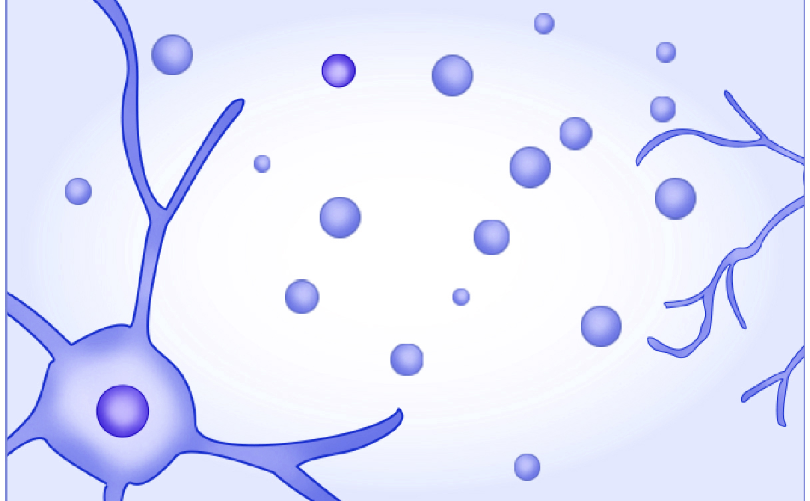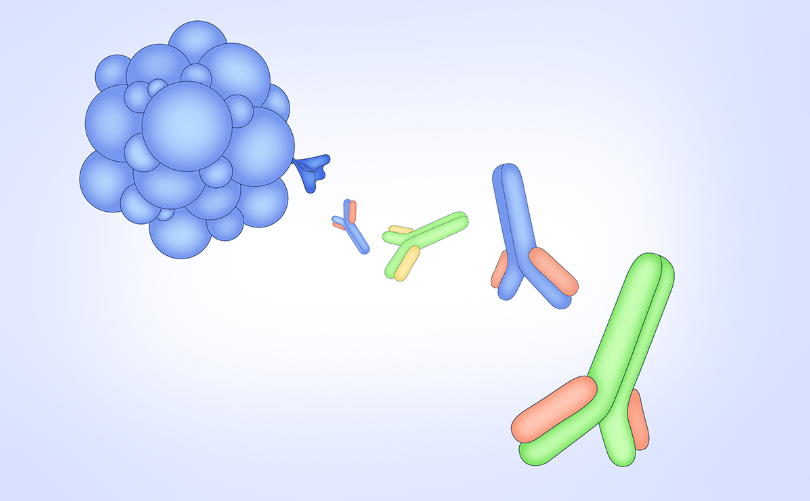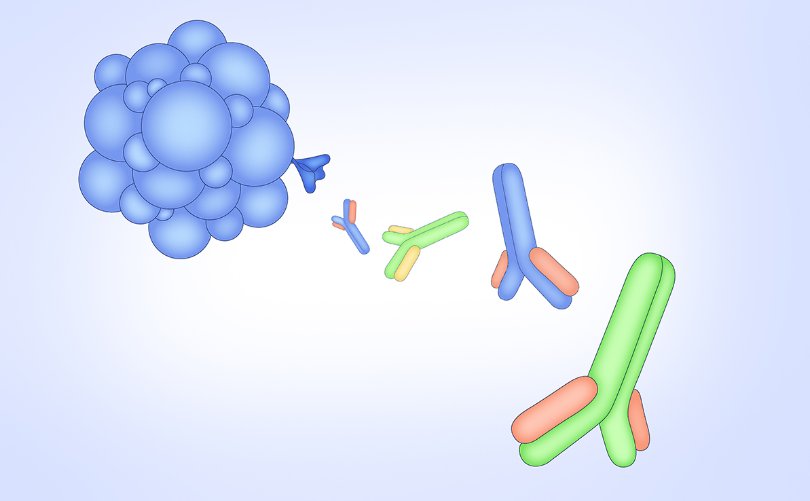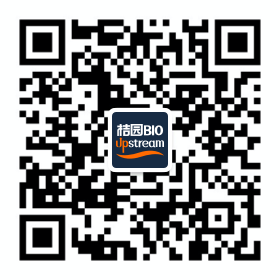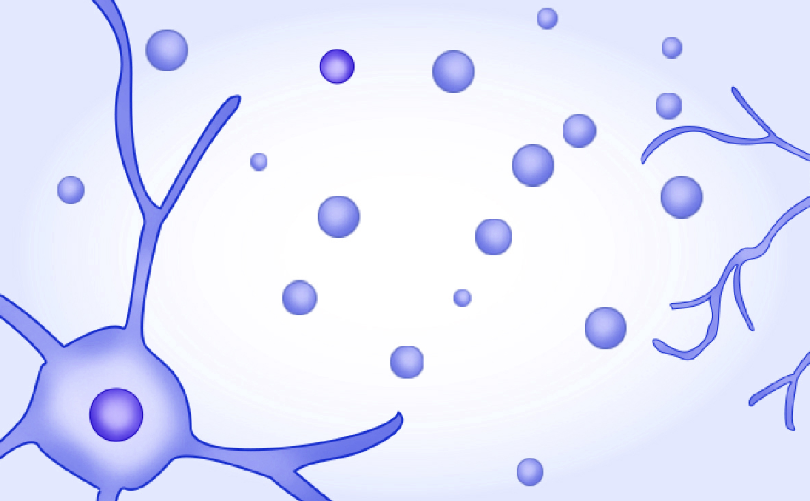

Y04102 Recombinant human TGFβ1 (His Tag)
- Y04102
- 东抗生物
- 江苏省南通市
- 现货
- 按需定制
- 议价
- 2022-10-20 10:43:41
江苏东抗生物医药科技有限公司
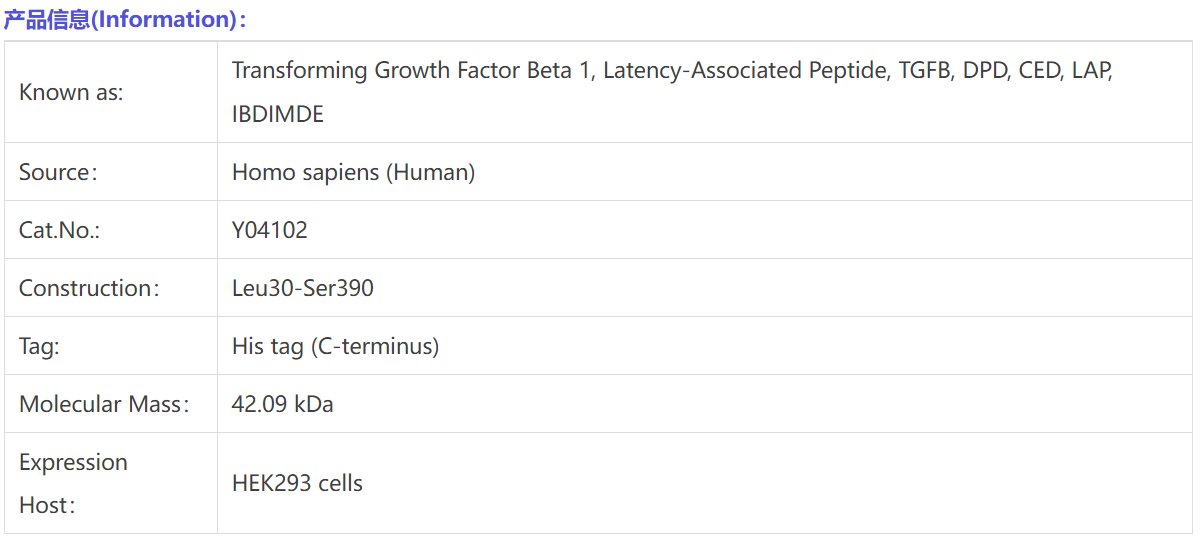
背景介绍(Background):
TGF-B1 is a secreted ligand of the TGF-beta (transforming growth factor-beta) superfamily of proteins. Ligands of this family bind various TGF-beta receptors leading to recruitment and activation of SMAD family transcription factors that regulate gene expression. The encoded preproprotein is proteolytically processed to generate a latency-associated peptide (LAP) and a mature peptide, and is found in either a latent form composed of a mature peptide homodimer, a LAP homodimer, and a latent TGF-beta binding protein, or in an active form consisting solely of the mature peptide homodimer. The mature peptide may also form heterodimers with other TGFB family members. This encoded protein regulates cell proliferation, differentiation and growth, and can modulate expression and activation of other growth factors including interferon gamma and tumor necrosis factor alpha. This gene is frequently upregulated in tumor cells. [provided by RefSeq, Aug 2016]
Transforming growth factor-β1 (TGF-β1) was the first fully cloned of the TGF-β superfamily members, which are collectively coded by 33 different genes in mammals. TGF-β1 is a homeostatic factor that keeps the immune system in balance and orchestrates the complex tissue repair processes following injury or infection in all organs. Failure of TGF-β1 to regulate normal body repair mechanisms is one commonality of pathological conditions like cancer and fibrosis that both involve dysregulated immunity, inflammation, exacerbated stromal cell activation, and overproduction of extracellular matrix (ECM). As for any other process that involves TGF-β1, there are numerous excellent reviews discussing its role in physiological healing and fibrosis, immunity, and cancer. TGF-β signaling begins when the activated TGF-β ligand docks with type II TGF-β1 receptor (TβRII) subunits on the cell surface, leading to the recruitment of type I TGF-β1 receptor (TβRI) subunits that become phosphorylated and activated by TβRII. In Smad-dependent TGF-β1 signaling, the R-Smads Smad2 and Smad3 are recruited and subsequently phosphorylated by TβRI. The activated Smad2/3 complex assembles with co-Smad4 and translocates to the nucleus, where it associates with co-activators and cell-specific transcription factors to regulate gene expression. Inhibitory Smad7 antagonizes TGF-β signaling by inhibiting R-Smad binding sites on the TβRI. In addition to regulating transcription by phosphorylating Smad2 and Smad3 and facilitating formation of a Smad2/3/4 complex that induces transcription, TGF‑β1 interacts with other signalling pathways. It can activate the mitogen-activated protein kinases (MAPKs), p38, c-Jun N-terminal kinase (JNK) and extracellular signal-related kinases (ERK) in a Smad-independent manner.
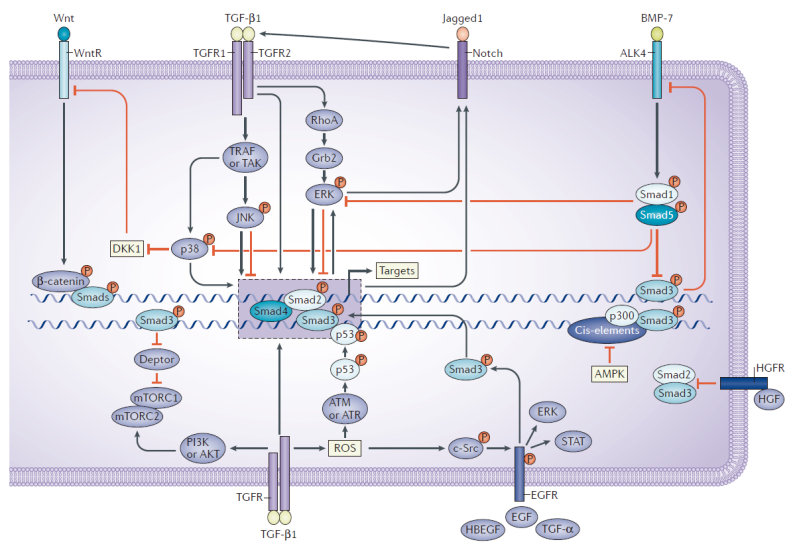
图 TGF-β1信号通路图
制剂(Formulation):
Lyophilized from 0.22 μm filtered solution in PBS,5%mannital,0.01% Tween80 pH7.4.
质量控制(Quality Control):
Purity: ≥ 95% as determined by reducing SDS-PAGE.
Endotoxin: < 0.1 EU/ug as determined by LAL test.
保存(Storage):
Use a manual defrost freezer and avoid repeated freeze - thaw cycles.
12 months from date of receipt, -20 to -70℃ as supplied.
1 month, 2 to 8℃ under sterile conditions after reconstitution.
6 months, -20 to -70℃ under sterile conditions after reconstitution.
FOR RESEARCH USE ONLY
参考文献:
[1] Lodyga M, et al. 2020. Semin Cell Dev Biol. 101:123-139.
[2] Meng XM, et al. 2016. Nat Rev Nephrol. 12(6):325-38.

